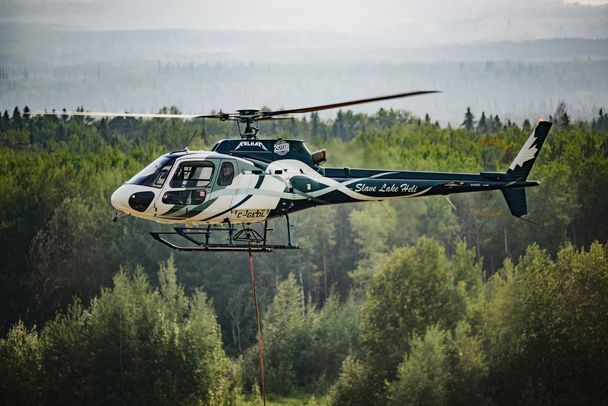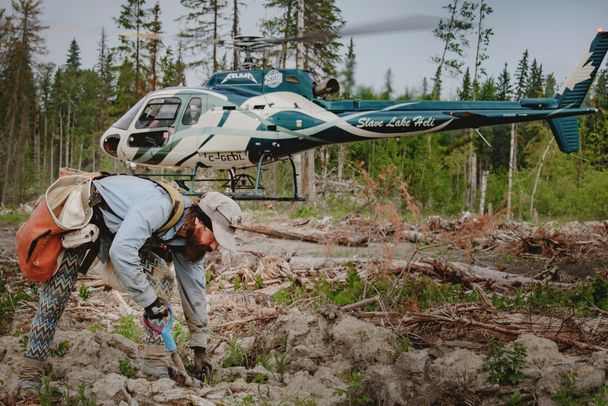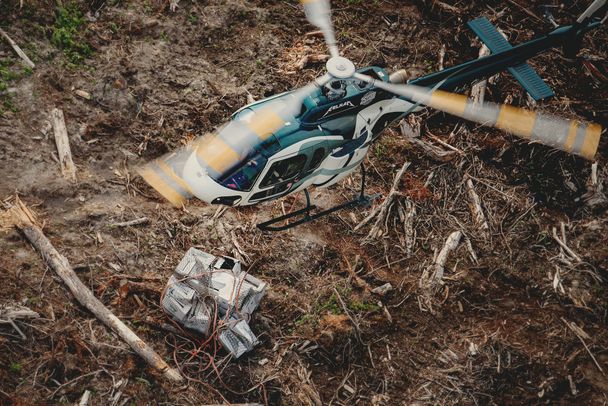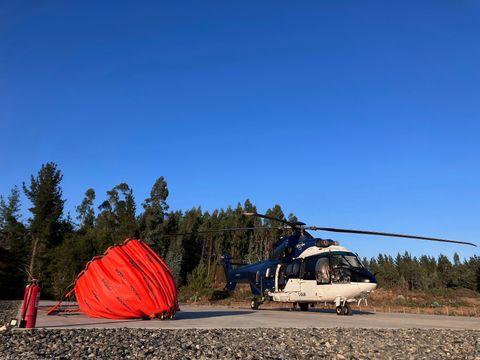Planting 200 million trees with the Airbus H125

As wildfires and timber harvesting continue to chip away at Canada’s vast forests, the need for large-scale reforestation has never been greater. Restoring those ecosystems isn’t about just planting trees - it’s about rebuilding habitats, stabilising the climate, and protecting our future. But these areas are often remote and difficult to access, making reforestation efforts challenging. That’s where helicopters come in.
In Alberta, Slave Lake Helicopters, with their fleet of H125 helicopters, is playing a key role in reforestation by transporting tree planters, seedlings, and machinery to some of the province’s most remote and challenging areas, leaving a lasting impact on both the environment and the communities they support.
Recently, in their 26th year of operation, the company achieved a major milestone, the planting of their 200 millionth seedling in the boreal forests of Alberta.

The impact of 200 million trees
The planting of 200 million trees is more than just a number; it represents a significant contribution to environmental protection. The success of the company is based on strong and long-lasting partnerships within the forestry sector in Alberta, and relies on working closely with the five forestry mills in the area, each of which has a duty and responsibility to replant trees after they are harvested. Around 2-4 trees are planted for every one that is cut down.
Each tree helps to combat climate change, restore ecosystems, and provide habitat for wildlife, so it is essential that when they are cut down for forestry, they are replanted to maintain the important ecosystem. For George and Debbie Kelham, Owners and Operators of Slave Lake Helicopters, this work is a labour of love. “We feel that we’re doing a lot of good,” George Kelham says. “Planting trees is part of the equation that is required to keep the globe at a minimal level of pollution. The trees do the ecological system a big favour. Right now we’re at a pace of about 15 million trees planted per year.”

Airbus H125: the helicopter of choice for tree planting and wildfire fighting
The success of the milestone is due in large part to the advanced capabilities of Airbus Helicopters’ H125. These helicopters are not just workhorses; they are precision tools that are critical to the unique requirements of the mission.
“It is the helicopter of choice,” Kelham says. “It’ll sling the right amount of seedlings, it’ll move the right amount of people. Very minimal downtime, and the cost per tree is the lowest you can get it.”
The Airbus H125 is perfectly suited for the demanding environments where these reforestation efforts take place. Its powerful engine and exceptional manoeuvrability allow it to access the remote, rugged zones within forests that are designated for reforestation (commonly referred to as “blocks”) that are otherwise unreachable, making it an indispensable asset in the planting of trees.
Kelham credits the united front of skilled mechanics, experienced pilots, and quality equipment for putting Slave Lake Helicopters at the forefront of tree planting over the years, and the dedication of his team that has allowed them to be responsive to the needs of the mission.
“We are very proud of our pilots that make these landings in unprepared landing pads in the blocks, day in and day out, and the engineers that work whenever they can to keep these helicopters maintained,” Kelham says. He continues on to state that they have had no downtime from an Airbus product over their 26 years, further underscoring his confidence in Airbus and in his choice to operate a fleet of seven H125 helicopters. On average, Kelham estimates that they fly about 1,500 hours per year planting trees with their H125 helicopters.
Reforestation isn’t the only way the company contributes to environmental protection. The same helicopters that transport tree planters and seedlings into the wild also serve a critical role in fighting the wildfires that threaten those very ecosystems every year. Working closely with Alberta Wildfire, teams are on call and ready to quickly dispatch helicopters for wildfire suppression, carrying water to fight fires in areas unreachable by ground forces.
“These helicopters are the only way to get into some of these remote areas,” says Kelham. “Without them, both planting 200 million trees and responding to wildfires simply wouldn’t be possible.”

A bright future ahead
Looking to the future, Slave Lake Helicopters’ dedication to sustainability and protecting their community remains unwavering. With a clear purpose and a highly capable fleet, the company plans to continue leading reforestation efforts throughout Alberta. As they celebrate this remarkable achievement, Kelham and his team remain focused on their mission to protect and preserve Alberta’s forests. He hopes that soon, they’ll be marking their next major milestone - a quarter of a billion trees planted - just in time to celebrate their 30th anniversary of helicopter operations in Slave Lake, Alberta.




